Final Recommendations
Process leads to final recommendations
Since the launch of the Riverfront Legacy Master Plan in July, there has been vast community engagement with common themes heard from the community and extensive data and research resulting in several key outcomes and findings for the master plan site. This information was used to shape the Design Team’s final recommendations.
Coalition Recommendation
Based on the findings from the process since July, the Riverfront Legacy Master Plan Coalition made a recommendation in December for the Design Team to proceed with creating a bold vision and design that incorporated the Scenarios that provided the most opportunity. These scenarios included Scenarios 1A and 1B, with some elements of Scenario 2.
Renderings and Designs
On January 14, the Design Team, comprised of Populous, RCLCO and Olin Studio, presented their final recommendations for the Riverfront Legacy Master Plan site at the public open house. The recommendations included renderings and designs, a cost breakdown of the plan and funding and implementation strategies.
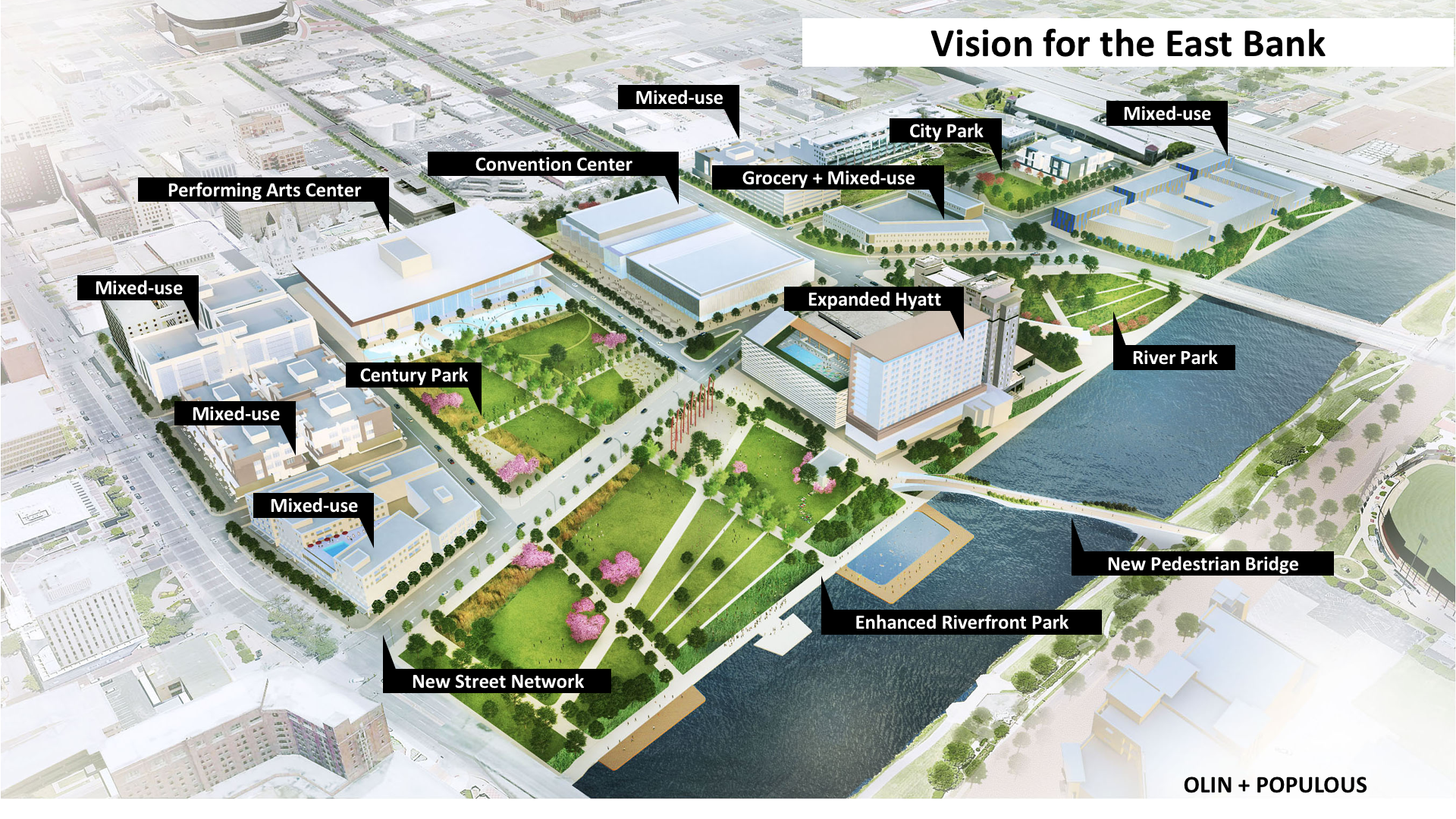
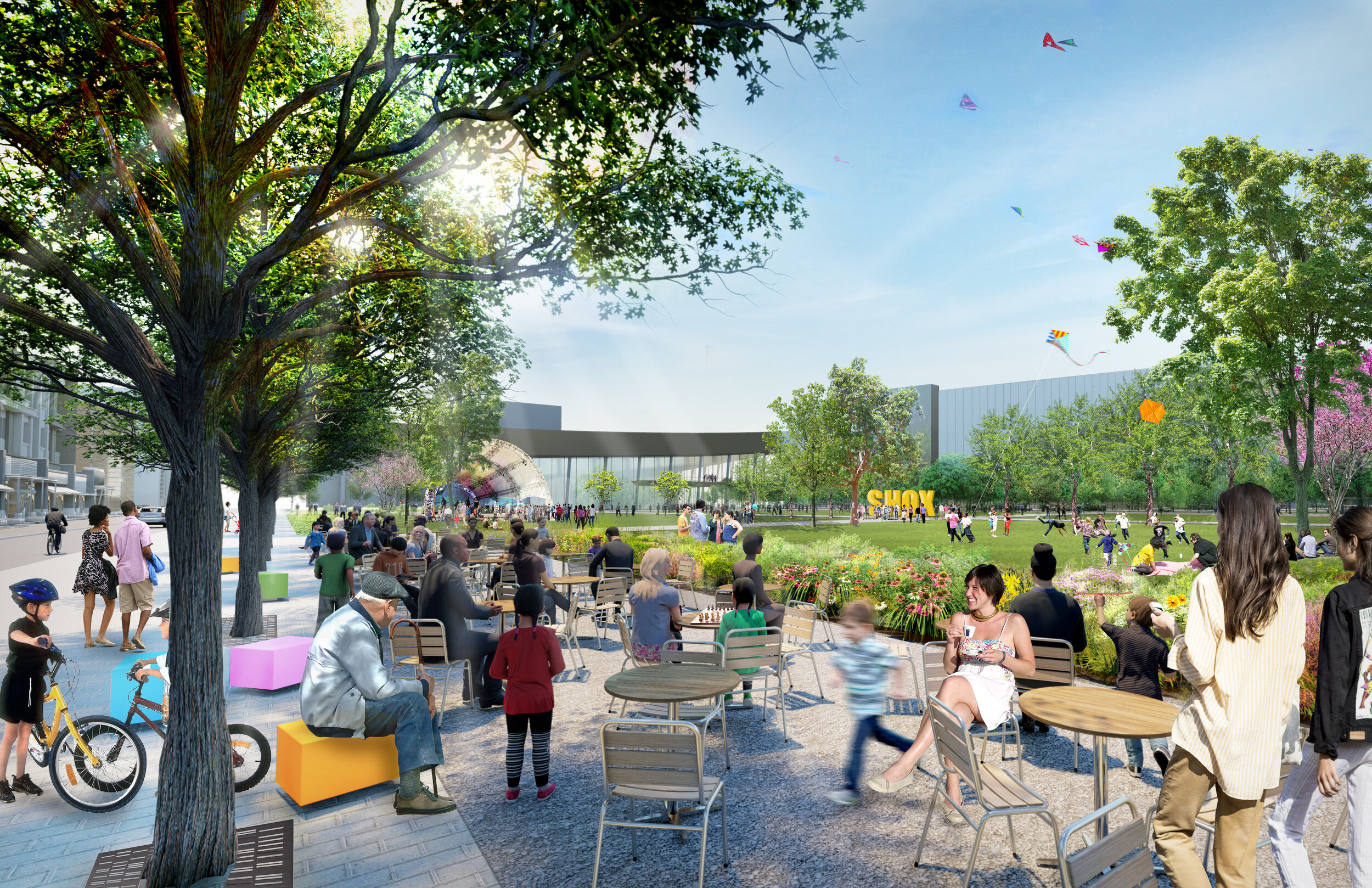
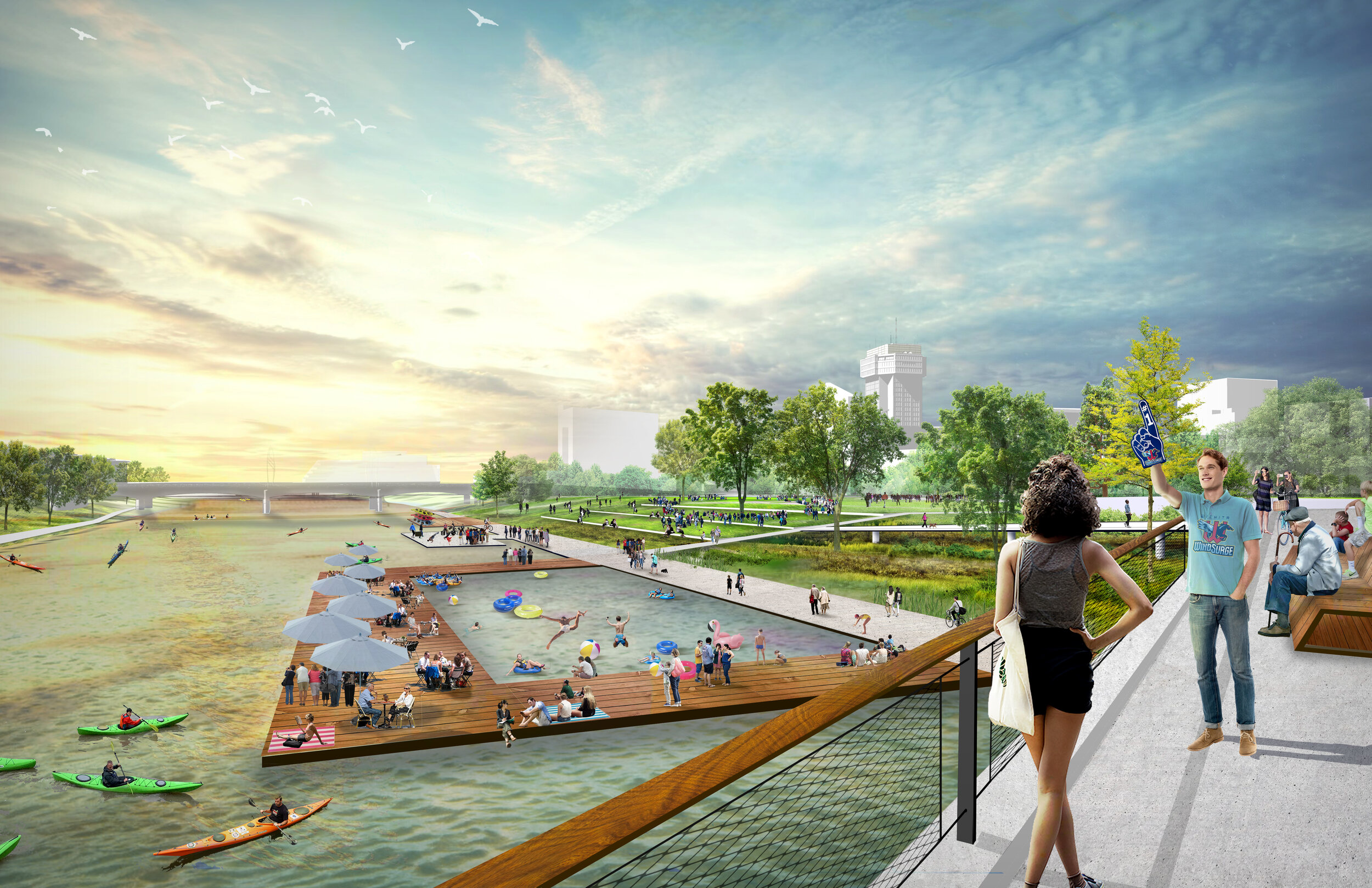
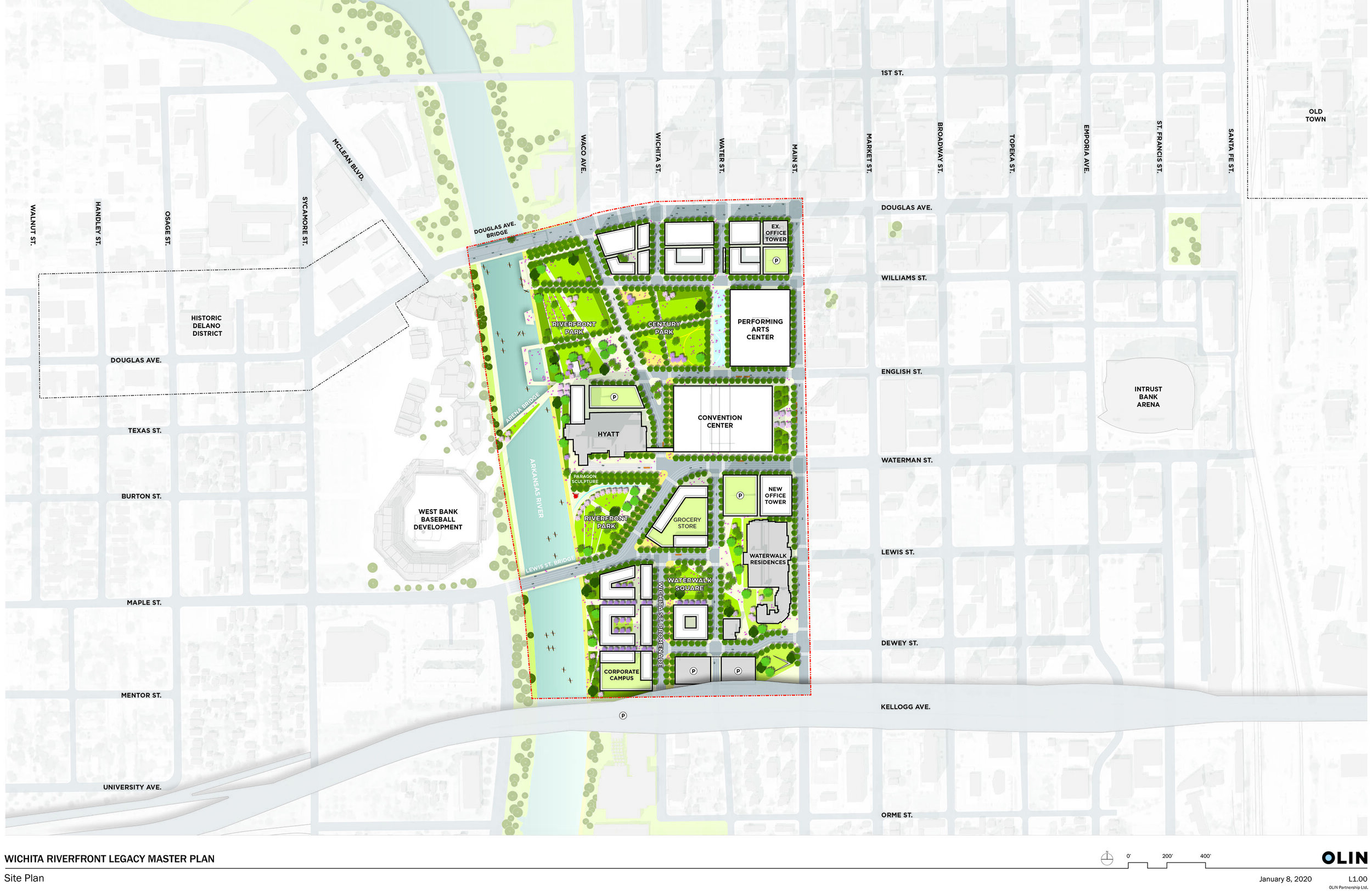
The plan is comprised of four types of projects including performing arts, green space, convention center and infrastructure. The plan also incorporates 17 major capital projects, including:
New performing arts
New convention center to generate tax revenue
10 acres of green space (including a new park along the riverfront)
Funding for programming and maintenance of parks
New mixed-use components to drive economic growth
New pedestrian bridge to connect the site to the new ballpark
These projects are meaningful and can generate income and impact for our community. Once complete, the 10-year total economic impact potential for the site is $915-$970 million.
Cost Breakdown
The recommended designs also include costs and recommended financing options for revitalizing the 55+ acres along the river. It is estimated the plan would take $1 to $1.2 billion in investments from public, private and philanthropic sources over 10 to 15 years, with most of that recouped in economic impact within the first 10 years.
A cost breakdown by project type is provided in the below chart.
A key component of the master plan recommendations is the order that the projects would be phased in.
In the first three to five years, the projects would include:
1. Riverfront Park Phase 1
2. Sustainable Infrastructure Planning
3. Mixed-use on Waterman and Main St.
4. Demo Library
5. New Performing Arts Center
6. Mixed-use on Douglas and Main St.
7. New Hyatt Garage
8. Start Design of Convention Center
9. Complete Streets Phase 1
10. Public Open Space Programming Planning
(Short-term project cost total = $265 - $300M)
In the mid-term, or five to 10 years, the projects would include:
1. Demo Old Hyatt Garage
2. New Convention Center & Public Plaza
3. Demo Century II and Support Buildings
4. Complete Streets Phase 2
5. New Century Park and Parking
6. Mixed-use on Douglas
7. Enhanced Riverfront Phase 2
(Mid-term project cost total = $690 - $750M)
And, in the long-term, or 10+ years, the projects would include:
1. Pedestrian Bridge
2. Complete Streets Phase 3
3. Re-route Waterman
4. New South Park and Parking
5. New Mixed-use on new Riverfront Parcels
6. New Mixed-use on Gander Mountain Site
7. Hyatt Expansion
8. Enhanced Riverfront Phase 3
9. New South Park Mixed-use Development
(Long-term project cost total = $175 - $250M)
Funding and Implementation Strategies
Specifics related to how to pay for these projects include a recommendation of a mix of private investments, including philanthropic dollars and sponsorships, as well as public options, including bonds, grants, tax-increment financing and a sales tax. The design team recommends about 50 percent of the public investments to be from a city or county sales tax.
Other financing recommendations included:
Private philanthropy
Corporate donations/sponsorships
Visitor taxes (hotel, rental car, etc.)
STAR Bonds
Tax Increment Finance (TIF) District
Community Improvement District (CID)
Land lease payments from private development
State and/or federal grants (EDA, DOT Build)
City or County GO bonding (if needed)

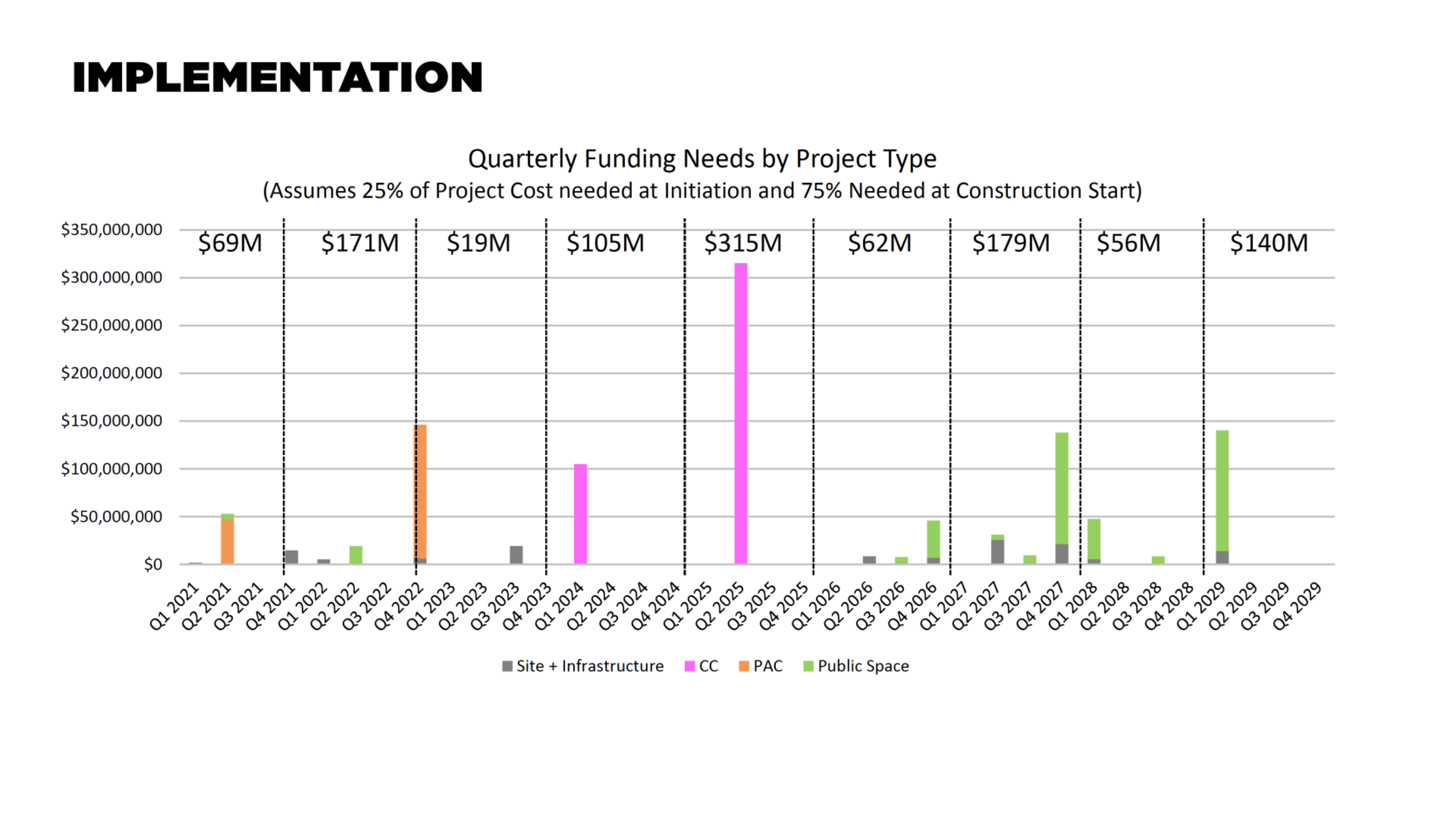
Questions
For questions relating to the final recommendations for the master plan site, please email info@riverfrontlegacywichita.org.
Next Steps
The Riverfront Legacy Master Plan Coalition will work with the City of Wichita and Sedgwick County to move the master plan forward.
For the latest updates on the Riverfront Legacy Master Plan, please visit www.riverfrontlegacywichita.org or by following the process on Facebook and Twitter.





